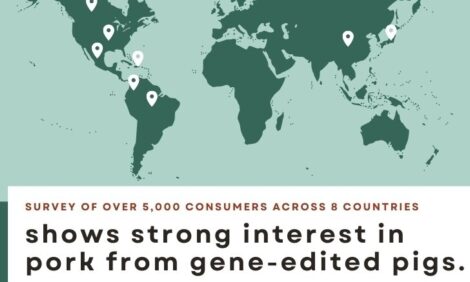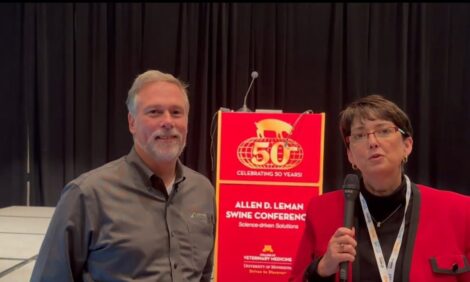



What Has Happened to the UK Pig Sector
In his regular monthly report for February 2002, Dr John Strak takes the latest DEFRA pig statistics and uses them to try and explain what happened to the UK pig sector in the last eighteen months.|
Dr John Strak

Dr Strak's views on the UK and global pig markets are produced in Whole Hog every fortnight. For more details click the link at the foot of the article. |
Numbers of sows,pig slaughter weights,and numbers of clean pigs slaughtered have all been significantly affected by this triple whammy. One important result is that the decline in the UK sow herd was arrested last year but the sows that are left are older and heavier. Overall, UK production of pigmeat in 2001 was down 15%(and 2000 was 12% down on 1999).
Chart 1 shows how the numbers of clean pigs slaughtered fell last year. The percentage change between 2000 and 2001 in the period from January-August is striking – around 20%reduction on the previous year.
And even the apparent recovery from September 2001 is misleading. The fall in the percentage change in the autumn is as much because of the reductions in abattoir activity in the previous year because of Swine Fever as to any recovery from FMD.

Pig slaughtering fell in the autumn of 2000 because of Swine Fever and thus reduced the apparent impact of FMD in 2001. The overall decline in clean pig slaughterings in 2001 was 16% (and 27%lower than in 1999). No wonder imports are on the rise.
In case you were wondering, none of the percentage changes in Chart 1 include the 145,000 pigs culled under FMD disease control or the 287,000 pigs slaughtered under the Welfare Disposal Scheme.

The sow herd slaughter figures were even more dramatically affected by disease outbreaks in 2000/01. Chart 2 shows that sow slaughterings fell by 44% for the entire year. In several months the decline in slaughterings was over 50%. The impact on the farm of figures like these can only be guessed at in the Whitehall offices of DEFRA – but it doesn’t take much imagination to realise that this disruption to normal patterns of production and trading will have caused extra costs, and hardship to animals and humans alike on a massive scale.
Only in November 2001 did sow slaughtering actually show any growth on the year before. It will be some months yet before we know how many retained sows have stayed in the national breeding herd and will thus have an ongoing impact on national productivity.

Chart 3 illustrates another impact of disease outbreaks and movement restrictions in the UK. Clean pigs were heavier through almost the whole year - up by 2% on average.
The first part of the year saw some carcass weights jump by as much as 6% in one month and by 3-4% in most months. From July onwards this indirect impact of FMD seems to have declined as, from then, the 2001 weights are little different than the previous year.
The sow herd does not, however, appear to be susceptible to the same management actions. Over the whole year average slaughter weights are up 5% on the 2000 average, and, although things got better in the second half of the year, the increase in slaughter weights after July was 4.8% on average against 5.8% in the first part of the year.
Clearly, there are a lot more overweight, older sows in the herd as you read this – and, just like the human population, this implies that the herd may not be as productive as it would otherwise have been.
On that note it may be wise to pause and reflect – or at least wait until more recent data from the farm is available before making any forecasts of what is to come. In particular it will be important to understand what the impact of all this disruption on farm productivity is going to be and how the sow herd’s age structure will affect litter size and feed conversion ratios. We will be well into 2002 before we know the full impact of disease in 2000/01.
Meantime, the figures in Charts 1,2 and 3 provide a sobering view of how badly the UK pig industry was hit by animal diseases.
Source: Whole Hog, February 2001






